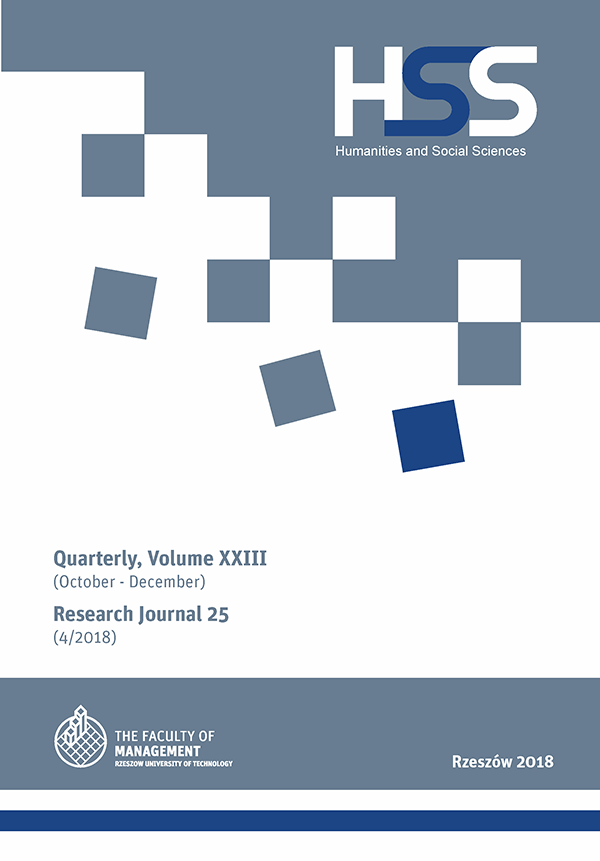Abstrakt
Training and improving employee knowledge plays an important role in every company. The process of personnel development is perceived as an investment and a basic management tool in the organization. The development of the training system and the selection of appropriate methods of their transfer in the field of occupational health and safety is a fundamental task of personnel departments. The issues in the safety areas are dealt with by specialists in such fields of science as philosophy, psychology, sociology, history, law, pedagogy, medicine and ergonomics.
In a mining company, the employee is exposed to natural, technical and personal hazards. The most frequent causes of accidents are personal hazards, the cause of which is in the uncontrolled muscular power and the gravity of the organism. However, the most serious consequences for the health and life of the employee are natural and technical hazards. Such accidents are connected with uncontrolled rock formation or worker’s contact with machines during the movement as well as electric shock. A separate group of threats is harmful factors occurring at workplaces that may cause occupational diseases.
The article attempts to assess the effectiveness of knowledge acquisition by employees for three different training methods. The analysis was based on the results of questionnaire surveys obtained during periodic training. Surveys were prepared for a group of workers employed at the position of a worker. It was proposed to compare the effectiveness of different training methods of employees by determining the percentage absorption rate of knowledge WW and the outflow rate of means of protection of individual WR. Test results and index values for individual measurement days are presented in tabular and graphical form.
Bibliografia
Burt C.D.B., Sepie B., Mcfadden G., The development of a considerete and responsible safety attitude in work teams, Saf.Sci. 2008, 46(1), DOI: 10.1016/j.ssci.2006.10.005.
Graham J., Nosek B.A., Haidt J. et al., Mapping the moral domain, “Journal of Personality and Social Psychology” 2011, 101(2), DOI: 10.1037/a0021847.
Kapusta M., Bąk P., Sukiennik M., Rola kultury bezpieczeństwa i higieny pracy w przedsiębiorstwie wydobywczym, „Przegląd Górniczy” 2016, t. 72, nr 8.
Kapusta M., Wpływ osób dozoru górniczego na poprawę warunków bhp, „Inżynieria Mineralna”/„Journal of the Polish Mineral Engineering Society” 2017, No. 2(40).
Lee T., Harrison K., Assessing safety culture in nuclear power station, „Safety Science” 2000, Vol. 34, No. 1–3, DOI: 10.1016/S0925-7535(00)00007-2.
McKenna E., Beech N., Zarządzanie zasobami ludzkimi, Felberg SJA, Warszawa 1999.
Mearns K., Flin R., Gordon R. et al., Measuring safety climate on offshoring installations, „Work &Stress” 1998, Vol. 45, No. 2.
Nahrgang J.D., Morgeson F.P., Hofman D.A., Safety at work: A meta-analityc investigation of the link between job resources, burnout, engagement, and safety out-comes, J.Appl. Psychol. 2011, 96(1), DOI: 10.1037/a0021484.
Assessment of work safety, mine rescue and general safety in connection with mining and geological activities in 2016, State Mining Authority, Katowice 2017.
Sari M., Duzgun H.S.B., Karpus C. et al., Accident analysis of two Turkish underground coal mines, Saf.Sci.2004, 42(8), DOI: 10.1016/j.ssci.2003.11.002.
Saurin T.A., Formoso C.T., Cambraia F.B., An analysis of construction safety best practices from a cognitive systems engineering perspective, „Safety Science” 2008, Vol. 46, No. 8.
Strategor: Zarządzanie firmą. Strategie, struktury, decyzje, tożsamość, PWE S.A. Warszawa 2001.
Sukiennik M., Bąk P., Kapusta M., Kultura korporacyjna a czynnik ludzki w polskich przedsiębiorstwach wydobywczych, „Inżynieria Mineralna”/”Journal of the Polish Mineral Engineering Society” 2016, R. 17, nr 2.
Zhang J., Chen N., Fu G. et al., The Safety Attitudes of Senior Managers in the Chinese Coal Industry, Int. J.Environ. Res. Public Health. 2016, 13, DOI: 10.3390/ijerph13111147.
Zhang R., The interaction mechanism between the safety attitude and safety perfmance. International Conference on Economics, Social Science, Arts, Education and Management Engineering, Xian, China, 12–13 Dec 2015, Published by Atlantis Press.
Zhang S., Shi X.Z., Chao Wu., Measuring the effects of external factor on leadership safety behavior, Case study of mine enterprises in China, Saf.Sci. 2017, 93, DOI: 1016/j.ssci. 2016.12.2017.
LEGAL ACT
Geological and Mining Law – Act of 9 June 2011 (Journal of Laws, No. 163. item 981).
Regulation of the Minister of Environment of 2 August 2016 on Mining and Mining Rescue Qualifications (Journal of Laws, item 1229).
Ustawa z dnia 26 czerwca 1974 r. – Kodeks pracy (Dz.U. z 1974 r, nr 24, poz. 141 ze zm.).

